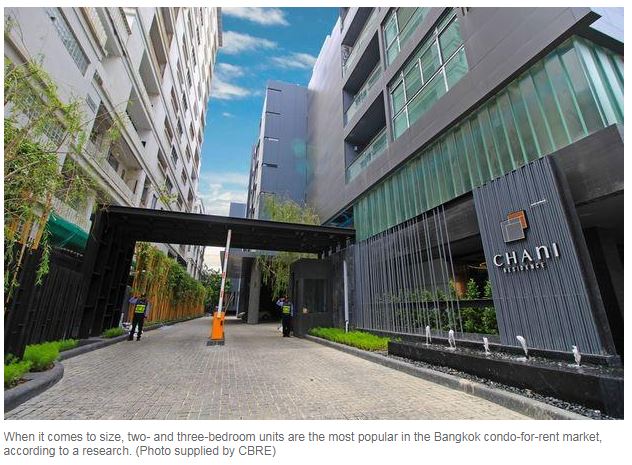Thailand: Deciphering expat property rental market
Many investors buy condominiums in Bangkok to rent them out and get a steady income flow while hoping for future capital gain through an increase in the value of their property.
In order to get the best rents and easily find tenants, it is critical that investors understand the needs of residential tenants: who they are, where they want to rent, what they want and how much they can afford.
There are two types of tenants in the Bangkok residential rental market. At the higher end are working expatriates and, at the lower end, generally with budgets of less than 10,000 baht per month, are Thais who cannot afford to buy a unit or just need accommodation for a short period of time like university students.
There is only a very small downtown rental market for Thais and residential rental demand mostly comes from expatriates working in Thailand who rent, rather than purchase, and are normally here for only 2-3 years.
Over the last three decades, expatriates have generally preferred living in only a few Bangkok districts, principally in Sukhumvit between Soi 1-63, Lumpini and parts of the Sathon area.
There are popular clusters of hot spots around Phrom Phong and Thong Lor in Sukhumvit, most of Lumpini and Sala Daeng and Nang Linchi in Sathon.
The Sukhumvit area remains the most popular location because of the convenience of the BTS skytrain, shops, hospitals, international schools and the variety of restaurants. Expatriate tenants are now considering locations further along Sukhumvit beyond Ekkamai to On Nut.
There are about 87,000 expatriates living in Bangkok, with a limited annual growth rate of only 2.8%. Japanese nationals used to account for over 25% of the expatriate working population in Thailand, which was down to 21.2% as of Q1 2018.
This is partially due to the increase in Chinese expatriates who have doubled over the last five years, becoming the second largest expatriate nationality, and currently account for 13.9% of expatriates with work permits in Thailand.
The choice of rental accommodation is either renting an apartment (a building owned by a single owner), renting a unit from an owner in a condominium building (a building whose units have been sold to individual owners), or a serviced apartment where the owner provides all amenities and services like a hotel.
Most of the demand for serviced apartments comes from single occupiers who want a studio or one-bedroom unit rather than families.
CBRE has analysed over 3,500 rental transactions completed by the Advisory and Transaction Services – Residential Leasing team over the last 10 years. The results showed that there has been a steady demand for two- and three-bedroom units.
Design, layout, quality of furniture, appliances and facilities mattered more than size although there were minimum sizes of around 80 and 150 square metres and monthly budgets of 73,000 and 90,000 baht for two-bedroom and three-bedroom units, respectively.
Budgets are converging as many companies are paying staff allowances based on their positions and not on their family’s size.
There was a preference for single ownership apartment buildings because of the ability of the tenant to contact one person for all repairs and maintenance.
In a condominium, the property manager is only responsible for the management of the common areas and not the inside of the units which are the individual owners’ responsibility.
A condominium investor, once they understand what a rental a tenant can afford, needs to choose a property in a popular location whose size, design, specifications and other features will maximise its appeal making renting it out easier, as well as maximising the rent per square metre and the return on their investment.
Source: https://www.bangkokpost.com/business/news/1475653/deciphering-expat-property-rental-market


 Thailand
Thailand




